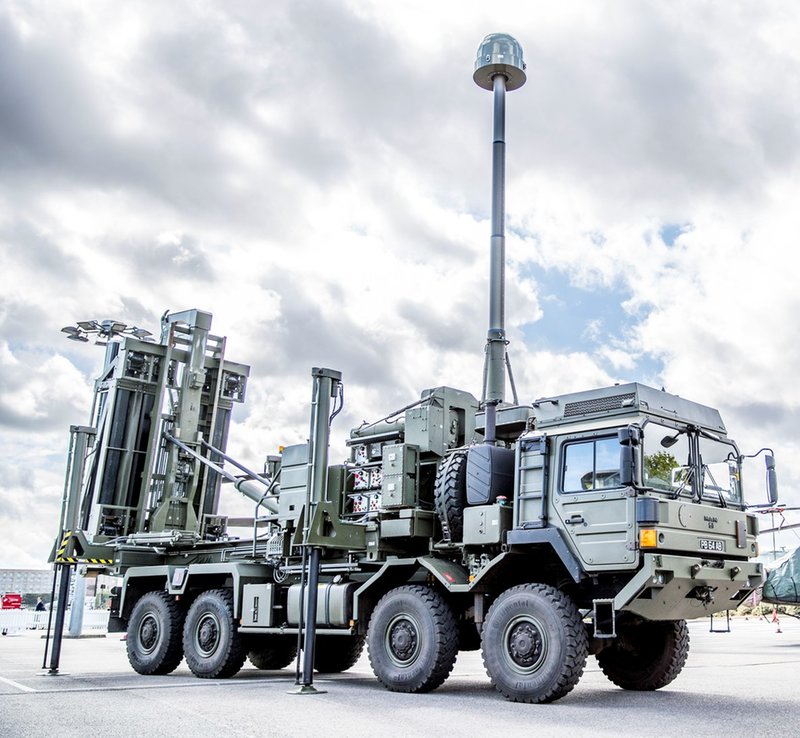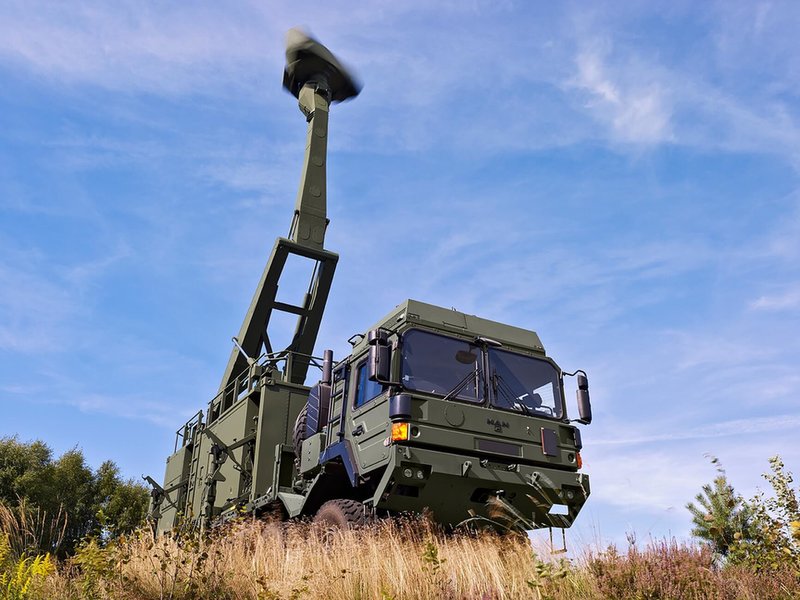Missile Defence
Sky Sabre: inside the UK’s missile defence system
Described as ‘a truly integrated air defence system’, Sky Sabre is intended to enable British forces to identify and engage enemy targets at much greater distance than its predecessor. Dr Gareth Evans investigates how the system will work.
/ Image: Crown Copyright/MOD
For all of its willingness to embrace the modern military’s love of acronyms, when it comes to serious equipment the British Army undeniably loves a good name – especially one that indulges in a little nostalgia for the long-forgotten days of proper, old-fashioned soldiering.
Thus, the replacement for the current Rapier system will not be lumbered with its cumbersome FLAADS (Future Local Area Air Defence System) moniker, nor routinely called after its actual Surface-to-Air Missile component – the equally unlovely CAMM (Common Anti-Air Modular Missile), itself also known as the uniquely cringe-inducing Land Ceptor.
With a nod both backwards to the Hussars of old, and forwards to the world of Daniel Craig and 007, it will be Sky Sabre.
Extending capability with a step change in air defence
Long before it had been officially unveiled, the promise of a much longer range system was generating headlines and column inches. Scarcely had Argentina’s deal to buy five retired Dassault Super Etendards from the French air force gone through, than the British press countered by trumpeting the arrival of a new system “to protect the Falklands.”
Of course, in the real world of weapons development and defence procurements, things are rarely so cause-and-effect driven and never, ever achieved that quickly, but the combination of the Falklands factor and the natty Bond-esque name was enough to guarantee the missile system quite an entrance onto the public stage.
“Scheduled to enter service in 2020, Sky Sabre promises to bring a step change in air defence for the British Army, extending its capability from short to medium range.”
The formal unveiling, at the beginning of February at Baker Barracks on Thorney Island, marked the first time that all the individual main components of the new system had come together. Scheduled to enter service in 2020, Sky Sabre promises to bring a step change in air defence for the British Army, extending its capability from short to medium range, and bringing unprecedented speed, precision and reliability. It is billed to achieve much – so just how does it work?
Interceptor element: the Common Anti-Air Modular Missile
As the interceptor element of the system, the land-based variant of the Common Anti-Air Modular Missile, CAMM(L), provides the punch. A highly agile munition, with an advanced fuzing package and a high-lethality warhead, at 99kg, the 3.2 metre-long Land Ceptor is more than double the weight of Rapier, and has over three times its range, being capable of reaching in excess of 25km according to manufacturer MBDA.
“The Land Ceptor design lends itself to being easily concealed and quickly deployed.”
The missile has a range of other impressive features too, including an active RF seeker with excellent clutter rejection capabilities, to allow even challenging threats such as cruise missiles and guided munitions to be successfully intercepted in all weather conditions. Equipped with folding fins, its compact design and 166mm diameter allows for multiple missiles to be carried on conventional vehicles, while its soft-launch system ensures true 360-degree air defence.
Fired from a modular launcher, the Land Ceptor design lends itself to being easily concealed and quickly deployed to function either as a stand-alone, or as part of an integrated battle-space network, enabling it to target over-the-horizon threats as required. For the moment, the decision has been made to use the currently in-service HZ-77 heavy utility truck as the base vehicle for the CAMM(L), but the launcher’s common interface module means that it could very readily be integrated onto a range of alternative vehicles in future.

The CAMM missile will form the core of the British Army’s land based air defence. Image: MBDA UK
The Giraffe: 3-D radar surveillance for complex environments
To hit your target, first you must see your target, and for that Sky Sabre relies on the eyes of a Giraffe – the Agile Multi-Beam (AMB) medium-range 3-D radar surveillance system from Saab.
Named after its extendable neck-like mast which allows the system to stick its head above trees and other local obstructions to maximise its range against low-level targets, the Giraffe AMB is a passive electronically scanned array radar. It uses stacked beam 3-D radar, with a 3-D phased array, digital beam forming antenna, working in the C band (4–8 GHz), and provides an elevation coverage of up to 70 degrees.
“The system has gained an enviable reputation as a combat-proven 24/7 capability”
Giraffe offers full 360-degree situational awareness to a range of 120km, which is updated every second, and can operate in complex, challenging environments such as mountains, coastal areas and around wind farms, with what Saab describes as “a unique capability to spot small UAS [unmanned aircraft systems] vehicles and the capacity to screen out difficult radar ‘clutter’, such as birds.”
The system was first introduced in 1977, and since then it has gained an enviable reputation as a combat-proven 24/7 capability, and racked up more than 150,000 hours in full operation to date. The UK first acquired the Giraffe AMB in 2008 as part of the Land Environment Air Picture Provision (LEAPP) programme, ordering additional units in 2015, along with upgrades for the existing systems and associated equipment.

The Giraffe’s extendable neck allows it to maximise its range against low-level air targets. Image: Saab
MIC4AD: battle management and intelligence
Rafael’s Modular, Integrated C4I Air & Missile Defense System (MIC4AD) has been selected to provide Sky Sabre’s battle management command, control, communications, computers, and intelligence (BMC4I) element, and link the Giraffes to the Land Ceptor launchers. Developed for Rafael Advanced Defense Systems by the 50% Rafael-owned company Mprest, it is the same technology used by Israel’s own successful Iron Dome missile defence shield.
Having won the open competition to provide the BMC4I capability, Rafael will be the key systems integrator, and additionally responsible for the provision of communications links and integration with the army’s existing communications infrastructure. Placing such a sensitive role in the hands of an Israeli contractor sparked a little surprise in some quarters, not least because Rafael has its own competitor system to CAMM/Land Ceptor, but there is little doubting the efficacy of the technology chosen.
“Having won the open competition to provide the BMC4I capability, Rafael will be the key systems integrator.”
An advanced and highly automated C4I system, MIC4AD can correlate and analyse data from distributed sensors and platforms in real-time to perform threat assessment and hostile targeting classification, and generate interception plans as appropriate. By enabling the unified command and fire control of multiple air and missile defence systems in this way, MIC4AD offers multi-mission/ multi-layer/multi-range C4I capabilities, which its makers say makes it a true force-multiplier when it comes to ensuring end-to-end air and missile protection.
When Rapier retires from service in 2020, replacing it with a sabre seems somehow fitting – and not just as a reminder of the death-or-glory cavalry charges of yore. After all, as the Danish proverb says, the sword keeps the peace of the land.